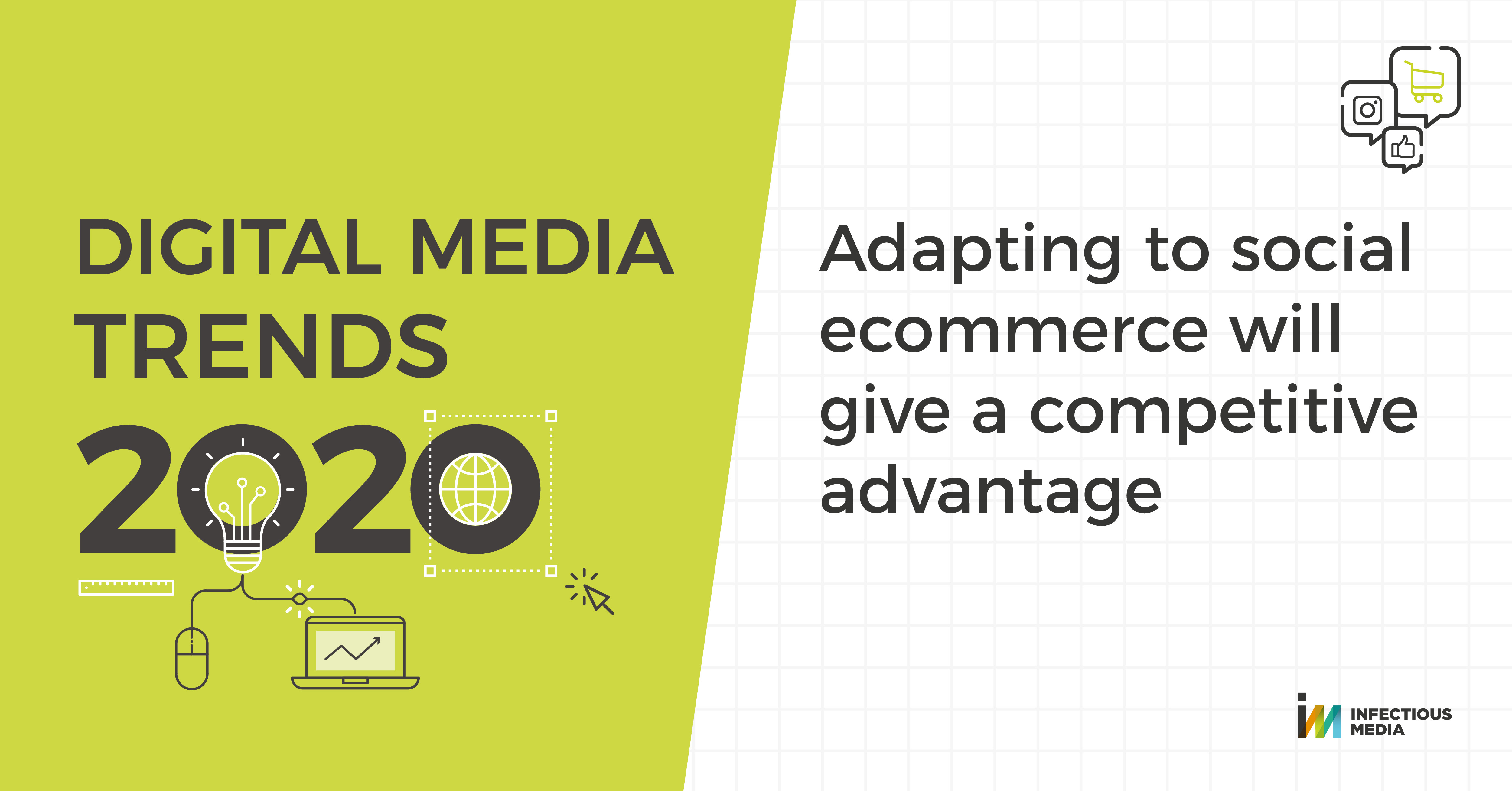Consumer media consumption and purchasing habits are changing fast. As social commerce evolves to meet these needs, advertisers are struggling to keep up with these shifts and proliferation of platforms.
Advertising opportunities in the social platforms are continually developing. They offer a fully immersive experience, allowing users to purchase within the same environments in which they consume news, share content and engage with friends and family.
People are time-conscious and as a marketer, having the ability to adapt to consumer behavioural trends is all important. Social environments are beginning to address these needs, for example, eliminating steps within the purchase journey or with platforms such as TikTok advancing their advertising offering. This is a brilliant and current opportunity for advertisers to drive innovation and develop a future facing social media strategy.
We continue to see the growth of social platforms, with Facebook now accounting for 22% of digital media spend in 2019. There are several contributors to this growth, which can be distilled to the fact that consumers are spending an increasing amount of time across their mobile, changing how they choose to use this device. On average users spend three and a half hours a day on a mobile, of which almost two hours is consuming social media. Social apps have evolved and are now an excellent environment for brands to reach their target audience, in an innovative and exciting way.
We have witnessed changing consumer habits and how they interact with brands. They are increasingly looking towards influencers and reviews as guidance in a purchase decision. This, along with the increase of time spent on devices beyond desktop, has put pressure on retailers to provide a seamless path to purchase within a mobile environment.
Social is a key platform to reach customers across all stages of the purchase journey, from brand discovery to conversion, with an increasing view to simplify the purchase process for consumers. Platforms are constantly evolving their offerings to accommodate for this, with Instagram and Facebook having introduced ecommerce ads designed to be housed and navigated within the walls of the social platform.
Instagram’s ‘shoppable ads’ allow consumers to browse products across the site and enter payment details, closing the loop. It is native advertising, with a seamless path to conversion all within one ecosystem. This simplicity in navigation provides a clean journey for the increasingly time-conscious consumer to be able to manage their purchasing in one place. Social platforms are now not only a place for research and showcasing products but a place for brands to capitalise on user’s time spent in these environments.
Advertisers need to be taking advantage of these opportunities, rethinking and re-evaluating their social strategy. The challenge now is to decipher which platforms are relevant for the audience you want to reach and what type of ads and objectives are applicable.
In a bid to continuously develop our tactics, we often test betas to find new ways to drive performance and results, something made possible by our Facebook Marketing Partner status.
For advertisers, keeping ahead of these trends is vital to retain relevance to the evolving consumer. This year advertisers need to get an understanding of the opportunity presented by each of these platforms and the value they can bring to their business.
Aliya Rafiq Vaz, Strategy Senior Manager
This article is part of the Digital Media Trends 2020 series, read more trends here.



.jpg)



